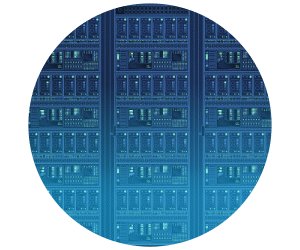What Is a Legacy Data Platform?
Monte Carlo Data defines a data platform as a “central repository and processing house for all of an organization’s data. A data platform handles the collection, cleansing, transformation and application of data to generate business insights.”
A traditional or legacy data platform, as opposed to a modern platform, isn’t cloud native. Instead, it relies on on-premises infrastructure, in which data is housed and managed on dedicated servers. Traditional data platforms are more structured and rigid, which inevitably produces data silos and challenges related to governance and duplication.
Plus, such environments aren’t always equipped to handle the growing volume of data that most organizations — particularly state governments — must deal with. As a result, traditional data platforms are now considered too inflexible and inefficient compared with modern data platforms.
What Is a Modern Data Platform?
According to Monte Carlo Data, a modern platform is made up of multiple cloud-based solutions and has either a data warehouse or a data lake at the center for storage and processing. A modern platform also often has capabilities for data ingestion, orchestration, transformation and observability.
“Modern data platforms are sustainable, flexible models built on four foundational pillars: versatility, intelligence, security and scalability,” Rowan says. “Their differentiator lies in the fact that they can ingest, process, analyze and present data generated by all systems and infrastructures within an organization, featuring a rare combination of data and detection.”
Modern data platforms are based on cloud-based solutions that give organizations the ability to analyze data quickly and effectively in an elastic, scalable environment. Such a platform is key to enabling enterprise resilience and innovation and effectively allows you to work with any data set, regardless of what it is or where it’s stored. Centralizing data into a data platform eases management burdens, allowing greater control over critical functions such as security and observability.
DISCOVER: How state and local agencies can modernize to enable data-driven decision making.
How Do Modern Data Platforms Support Storage and Processing?
To be modern, an organization’s data platform needs a few key components. First, it has to be made flexible by leveraging public cloud hyperscalers — also known as large cloud providers — or even Software as a Service platforms. This kind of environment offers nearly unlimited data storage capacity and lets organizations run a number of processes and analyses without additional physical hardware. Modern cloud platforms often have built-in tools for streamlined data processing, analytics and visualization.
A modern data platform must also have a robust data governance strategy to ensure the responsible management of data. With a more simplified data environment, organizations can implement data governance more easily than they might within legacy environments.
Another key component of a modern data platform is data democratization, with information no longer siloed. Instead, data is available for analysis across the organization to facilitate better decision-making, help uncover new efficiencies and identify areas for improvement.












